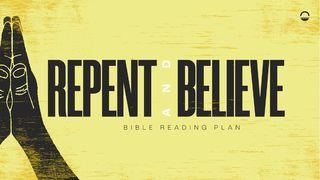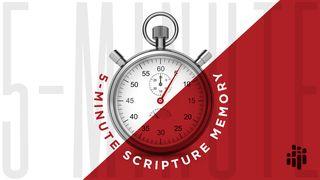Plan Info
The Defining Moments of Christ's PassionSample

Christ is Crucified
Crucifixion was indisputably one of the most cruel and barbaric forms of punishment in the ancient world. The word “crucified” is the Greek word staurao which describes an upright, pointed stake that was used for the punishment of criminals. It was always used in connection with public executions. At the time Jesus was crucified, the grueling act of crucifixion was entirely in the hands of the Roman authorities. This punishment was reserved for the most serious offenders, usually for those who had committed some kind of treason or who had participated in or sponsored state terrorism.
After a person was declared guilty and sentenced to be crucified, a crossbeam would be laid across his back, and a sign with the person’s crime written on it was made, later to be hung on the cross above his head. Sometimes the sign bearing the person’s crime would be hung from his neck, so all the spectators who lined the streets to watch him walk by would know what crime he committed. This was the very type of sign that was publicly displayed on the Cross above Jesus’ head, with the crime He was charged with — “King of the Jews” — written in Hebrew, Greek, and Latin.
Carrying such a heavy weight for a long distance would be difficult for any man, but especially for one who had been as severely beaten as Jesus. Once the offender reached the place where the crucifixion was to occur, he was laid on the crossbeam he carried with his arms outstretched. Then a soldier would drive a five-inch iron nail through each of his wrists — not the palms of his hands — and into the crossbeam. After being nailed to the crossbeam, the victim was hoisted up by a rope, and the crossbeam was dropped into a notch on top of the upright post.
When the crossbeam dropped into the groove, the victim suffered excruciating pain as his hands and wrists were wrenched by the sudden jerking motion. Once the victim’s wrists were secured in place on the crossbeam, his feet came next. The victim’s legs would be positioned so that the feet were pointed downward with the soles pressed against the post on which the victim was suspended. A long nail would then be driven between the bones of the feet, lodged firmly enough between those bones to prevent it from tearing through the feet as the victim arched upward, gasping for breath.
For the victim to be able to breathe, he had to push himself up by his feet, which were nailed to the vertical beam. Because the pressure on his feet became unbearable, however, he couldn’t remain in this position long, so he would eventually collapse back into the hanging position.
When the victim was finally too exhausted and could no longer push himself upward, the process of asphyxiation began. When Jesus dropped the full weight of His body down on the nails that were driven through His wrists, it sent horrific, excruciating pain waves up His arms to His brain to register.
After several hours of this torment, the victim’s heart would begin to fail. Next, his lungs would collapse, and excess fluids would begin filling the lining of his heart and lungs, which only added to the slow agony of the process of asphyxiation.
When the Roman soldier came to determine whether or not Jesus was alive or dead, he thrust his spear into Jesus’ side. But the Bible tells us that water and blood mixed together came pouring forth from the wound the spear had made — evidence that Jesus’ heart and lungs had shut down and were filled with fluid. This was enough to assure the soldier that Jesus was already dead.
My friend, this is a only brief taste of a Roman crucifixion.
In our society, the cross has become a fashion item, decorated with gems, rhinestones, gold, and silver. When people make the Cross pleasing to look upon and beautify it, people forget that it wasn’t beautiful or lavishly decorated at all. In fact, the Cross of Jesus Christ was shocking and appalling!
If we don’t deliberately choose to meditate on what He went through, we will never fully appreciate the price He paid for us. How tragic would it be if we lost sight of the painful price of our redemption? Let’s never allow ourselves to overlook, forget, or lightly esteem the enormous price our Savior paid for each of our sins on the Cross of Calvary.
Think About It:
The cross symbolizes one of the most barbaric forms of execution in history. Take some time to deliberately reflect upon the tortuous death Jesus willingly died for you. Think about the excruciating pain and comprehensive price that was required for your redemption. Jesus gave you His all — how can you give Him any less?
Scripture
About this Plan

The events surrounding the death, burial, and resurrection of Jesus Christ changed the course of history. Jesus offered redemption so we would never be eternally separated from God our Father. Jesus’ sacrificial death pr...
More
We would like to thank Rick Renner Ministries for providing this plan. For more information, please visit: https://renner.org/
Related Plans

Seven Reasons to Not Fear

At the Feet of Jesus

From Now On

Horizon Church May Bible Reading Plan: Repent and Believe - the Gospel of Mark

5 Minute Scripture Memory

Strength to Soar by Toni LaShaun

I Shouldn't Feel This Way by Dr. Alison Cook

Keep the Faith in a World Turned Upside Down by Dr. David Jeremiah

Hope Beyond Circumstances
